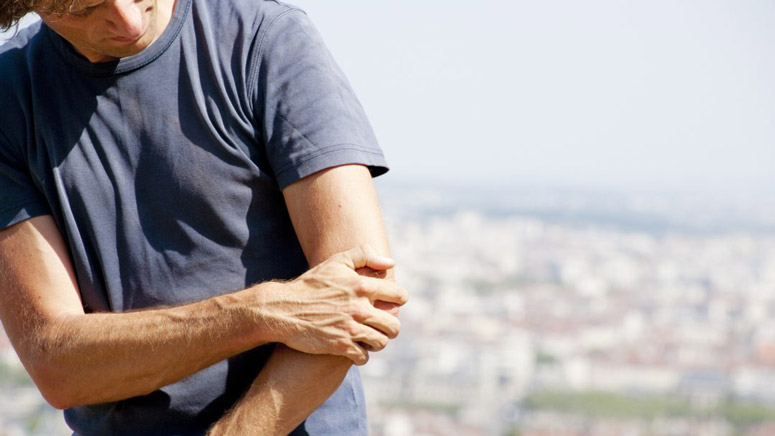Symptoms of Tennis Elbow

Symptoms of lateral epicondylitis can appear for no apparent reason and include:
Elbow pain: more specifically located on the outer side when the hand is facing upwards. The pain [2] arises or worsens in a handshake, when opening the door, combing hair, writing or typing. The pain can radiate to the forearm. The elbow pain experienced in tennis elbow generally worsen over time.
Decreased strength in the arm or wrist, making it difficult to hold a glass of water for more than 1 minute
● Increasing pain when grasping and rotating;
● Pain when touching the elbow:
● Redness of the inflamed area (rare);
● Limited mobility of the fingers and elbow joint;
● Loss of muscle strength;
● Night pain
The symptoms [3] appear gradually over weeks or months and must be evaluated by the general practitioner or orthopedist, or by the physiotherapist who can also make your diagnosis.
In patients with lateral epicondylitis, pain in the elbow is the major and classic symptom, which increases when a weight is held in the arm during extension. Playing tennis or similar athletic movements can actually cause epicondylitis, but it is often associated with other activities. On palpation in the area of attachment of the tendons, about 1 cm distal to the middle part of the epicondyle, there is induration and tenderness. In addition, there is a decrease in muscle strength with resistance to grip and with supination of the hand. There are also tests that shows signs of the disease, such as chair lift (with arm pronation) and the coffee cup test (in which the patient lifts a full cup of coffee). Elbow pain usually occurs during these tests. The diagnosis of lateral epicondylitis is, however, usually clinical.
With medial epicondylitis, pain is localized in the medial part of the elbow. Symptoms (pain) in patients with medial epicondylitis develop gradually (except for acute trauma). Muscle weakness during grasping is also noted. Patients may have a history of playing sports like golf, basketball, volleyball. On palpation in the area of the pronator flexor tendons (5-10 mm and distal to the middle part of the medial epicondyle), induration and soreness are usually noted. In addition, pain is exacerbated by resistance from the wrist to flexion of the forearm and pronation at a 90 ° angle. Flexion contractures can develop in professional athletes due to muscle hypertrophy.













